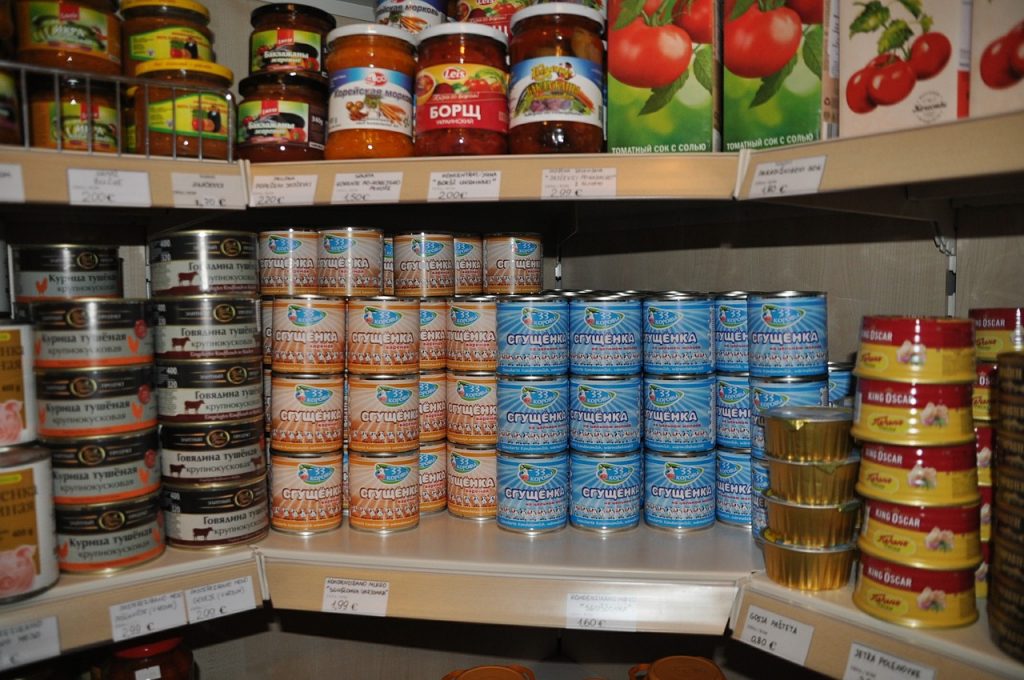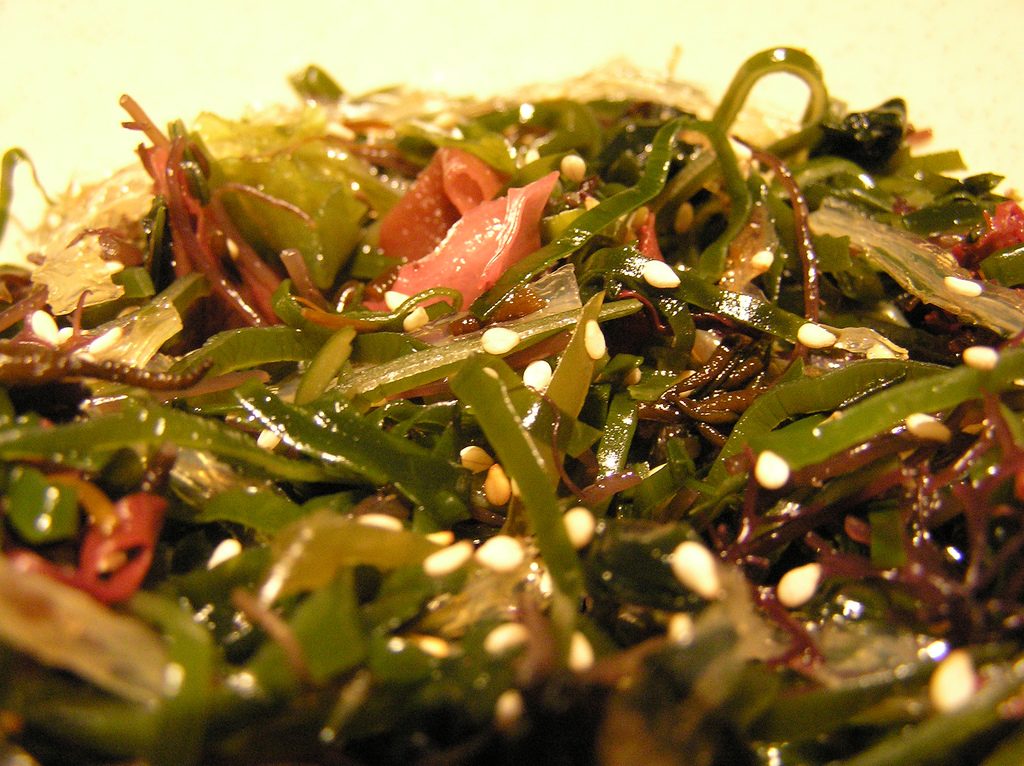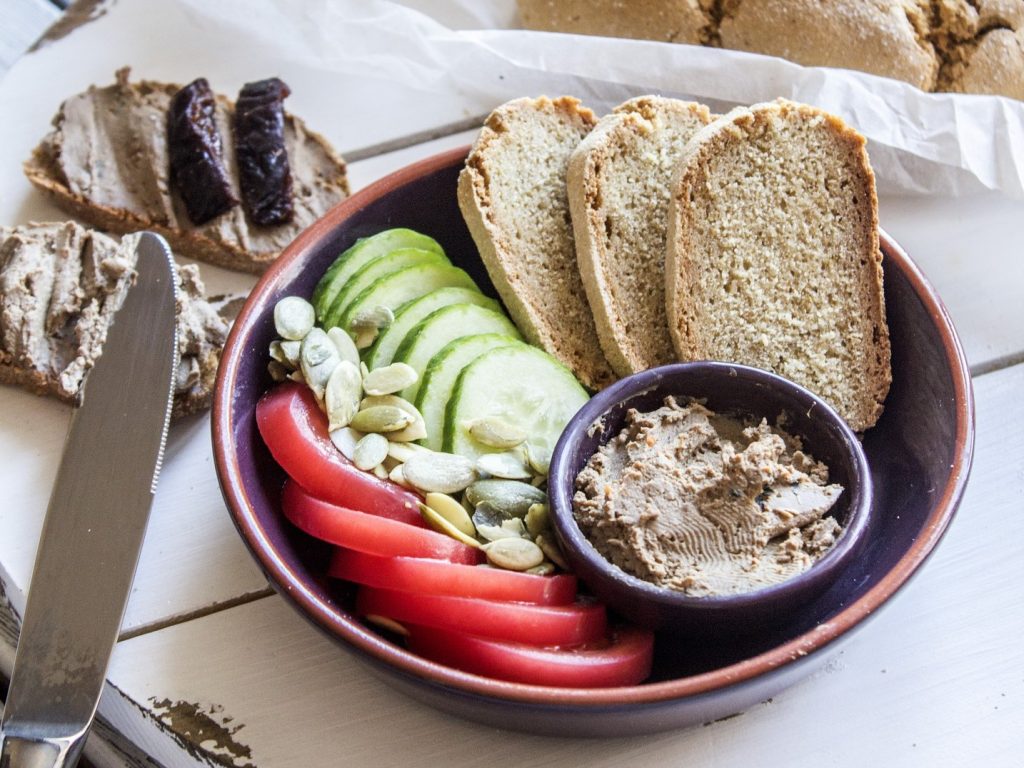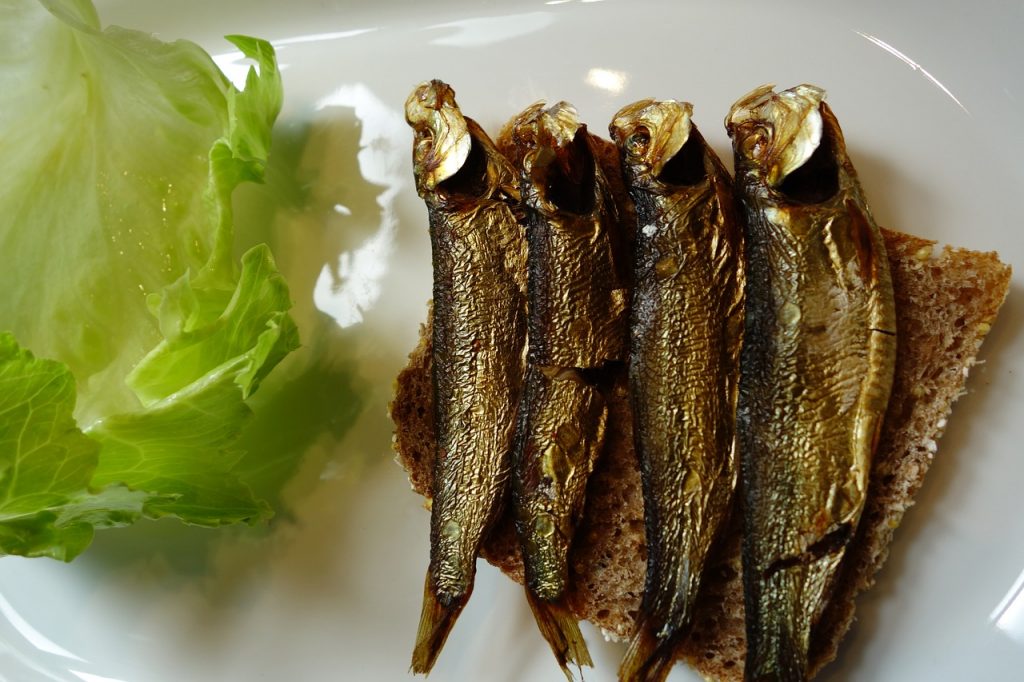4 Canned Foods Popular in Russia Posted by Maria on Dec 6, 2018 in Culture
Whether a result of past and present food shortages or a clever way of preserving items, canned foods (консе́рвы) are a staple of the average Russian’s diet. Let us look at four common items you will find in many shopping baskets.
Сгущёнка
Sweetened condensed milk, officially called сгущённое молоко́ but better known as сгущёнка, is a favorite with many Russians. It often comes in a recognizable blue can and may be used in desserts (десе́рт), added to your tea (в чай), similar to how Americans put creamer in their coffee, or simply eaten out of the can by the spoonful (ло́жкой)!
Морска́я капу́ста
You may know капу́ста as cabbage, but what is морска́я капу́ста—”sea cabbage”? Well, it is actually a popular side dish/salad made of pickled laminaria, or basically kelp/seaweed! It comes in short round cans in Russia, which contain shredded seaweed in oil. Other ingredients, like the sesame seed in the picture above, are not normally included.
Паште́т
Паштет is roughly equivalent to pâté and is basically minced liver meat (печёночный фарш) with fat (жир). A popular, if less fancy variation comes in a can. This savory ingredient is often used as a spread to be put on bread for an open-face sandwich (бутербро́д). Yum!
Шпро́ты
Шпро́ты is a name of certain species of sprats, which are commonly consumed in the countries of the former USSR as a canned food. They come in oil (ма́сло) and have a smoky, salty taste. Many people like to have them on brown bread as an open-face sandwich, although you can also eat them straight out of the can with a fork!
Have you tried any of these foods? Are they available where you live?

Build vocabulary, practice pronunciation, and more with Transparent Language Online. Available anytime, anywhere, on any device.








Comments:
samonen:
Шпроты (Old Riga brand) and сгущёнка (both the white and the caramelized brownish stuff) are available in supermarkets in Finland, but I haven’t seen canned морсквя капуста. I’m sure it would have market potential outside of the Russian community these days as there is some hype for kelp and nori and whatever as ecological foods. Actually, I think I’ll put in a word for it at a couple of retailers and an importer of Russian foods!
Russians seem to be loyal to certain products they are accustomed to. For example, I’ve noticed the Old Riga “shproty” are often sold out, but the same stuff in another kind of can don’t seem to sell. I wonder if it is a “Soviet” holdover: either there is something or there isn’t.
In some stores, they put the Russian stuff (condensed milk, buckwheat, pryaniki, sourkraut, shproty, canned sorrel, soups) in one place so they’re easier to find – a motley shelf of stuff.
Maria:
@samonen Samonen, interesting information! I do remember most shproty coming from Latvia! Perhaps you’re right in that this has come to be associated with quality. Do Finns with no relatives in/connections to Russia occasionally buy what’s sold on the “Russian” shelf?
samonen:
@Maria I do, because I’ve taken a liking to buckwheat and sourkraut for a number of reasons. I also love the “shproty” — they are sort of simple but good in an old-fashioned way. I know two people with celiac disease who buy the buckwheat (it is actually from Lithuania and often sold out) for the same reason as I do: the taste. I think it is roasted slightly whereas the other brands are not.
I’m not sure if having a “Russian shelf” is common here. I just noticed in the store I frequently shop that they had put these items at the end of one aisle against the normal supermarket logic. Thoughtful and helpful.
Oh, I made a new year’s resolution not to buy the sgushonka because I can’t resist it, it’s almost like fudge. It’s addictive. Once the can is opened, I noticed I started finding excuses for consuming it in one form or the other. I put it in coffee, so I noticed I started drinking lots of coffee! God, just like an alcoholic!